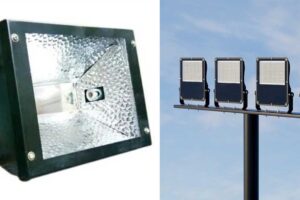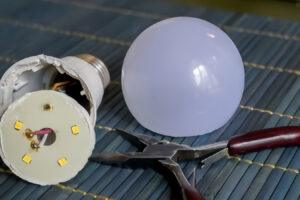Worried about rising energy bills and unreliable outdoor lighting? Poorly lit parking lots lead to safety risks, customer complaints, and wasted energy. But there’s a better, smarter way—solar-powered LED parking lot lights.
Solar parking lot lights are self-sustaining lighting systems that use sunlight to power LED fixtures, eliminating the need for underground wiring and grid electricity. These lights combine solar panels, LED luminaires, and smart controls like motion sensors or dusk-to-dawn sensors to provide reliable, eco-friendly lighting in parking lots, pathways, and outdoor public spaces. Ideal for commercial, municipal, and industrial use, they cut operational costs while increasing safety and visibility.
Keep reading to discover how to get the best setup for your project.
Table of Contents
What Are Solar Parking Lot Lights?
Solar parking lot lights are outdoor lighting systems that use sunlight as their energy source. They are designed to illuminate parking areas without being connected to the electrical grid. Instead of relying on traditional power lines, these lights collect energy from the sun during the day and store it in built-in batteries. When the sun goes down, the stored energy powers the LED light, providing reliable nighttime illumination.
These systems are self-contained and typically include the following components:
- Solar Panel: Captures sunlight and converts it into electricity.
- LED Light Fixture: Provides bright, energy-efficient illumination.
- Rechargeable Battery: Stores solar energy during the day to power the light at night.
- Charge Controller: Manages the flow of electricity between the panel, battery, and LED to prevent overcharging or discharging.
- Mounting Pole or Bracket: Holds the entire system in place.
- Optional Sensors: Many models include motion sensors or dusk-to-dawn sensors to improve efficiency by only activating when needed.

Solar Lighting System
One of the main advantages of solar parking lot lights is their ease of installation. Since they don’t require trenching or wiring, they can be placed in remote areas, temporary locations, or places where access to power is limited. This makes them especially useful for commercial lots, public parks, schools, rural roads, or emergency setups.
They also offer long-term savings by reducing electricity bills and minimizing maintenance, while supporting environmental goals through the use of renewable energy. Overall, solar parking lot lights provide a smart, sustainable, and flexible lighting solution for modern outdoor spaces.
Benefits of Solar Parking Lot Lights
Solar LED parking lot lights are becoming a popular choice for many businesses, municipalities, and property owners—and for good reason. These systems offer a wide range of advantages that go beyond just saving money. Here’s a closer look at why they make sense:
- Energy Savings: Since they rely entirely on sunlight, solar lights don’t use electricity from the grid. After the initial installation, your energy costs drop to zero. This makes them a cost-effective solution in the long run.
-
Easy Installation: There’s no need for trenching, conduit, or underground wiring. This means faster setup and lower labor and material costs. They’re especially helpful in places where wiring is expensive or difficult to install.
-
Low Maintenance: Solar lights have fewer mechanical components and use long-lasting LED fixtures. Once installed, they require minimal upkeep—just occasional cleaning and battery checks.
-
Eco-Friendly: By using renewable solar energy, these lights help reduce greenhouse gas emissions and lower your carbon footprint. This supports green initiatives and can help meet sustainability goals.
-
Improved Safety: Bright, consistent lighting increases visibility in parking lots. This deters theft, vandalism, and other crimes while making pedestrians and drivers feel safer.
-
Autonomous Operation: Most models come with built-in dusk-to-dawn or motion sensors. They automatically turn on at night and off in the morning, or activate only when motion is detected, saving even more energy.
-
Grid Independence: Solar parking lot lights work independently of the local power grid. They’re perfect for areas with unreliable power or no grid access, such as rural lots, temporary setups, or disaster response zones.
All these benefits make solar parking lot lights a smart and forward-thinking solution for modern outdoor lighting needs.
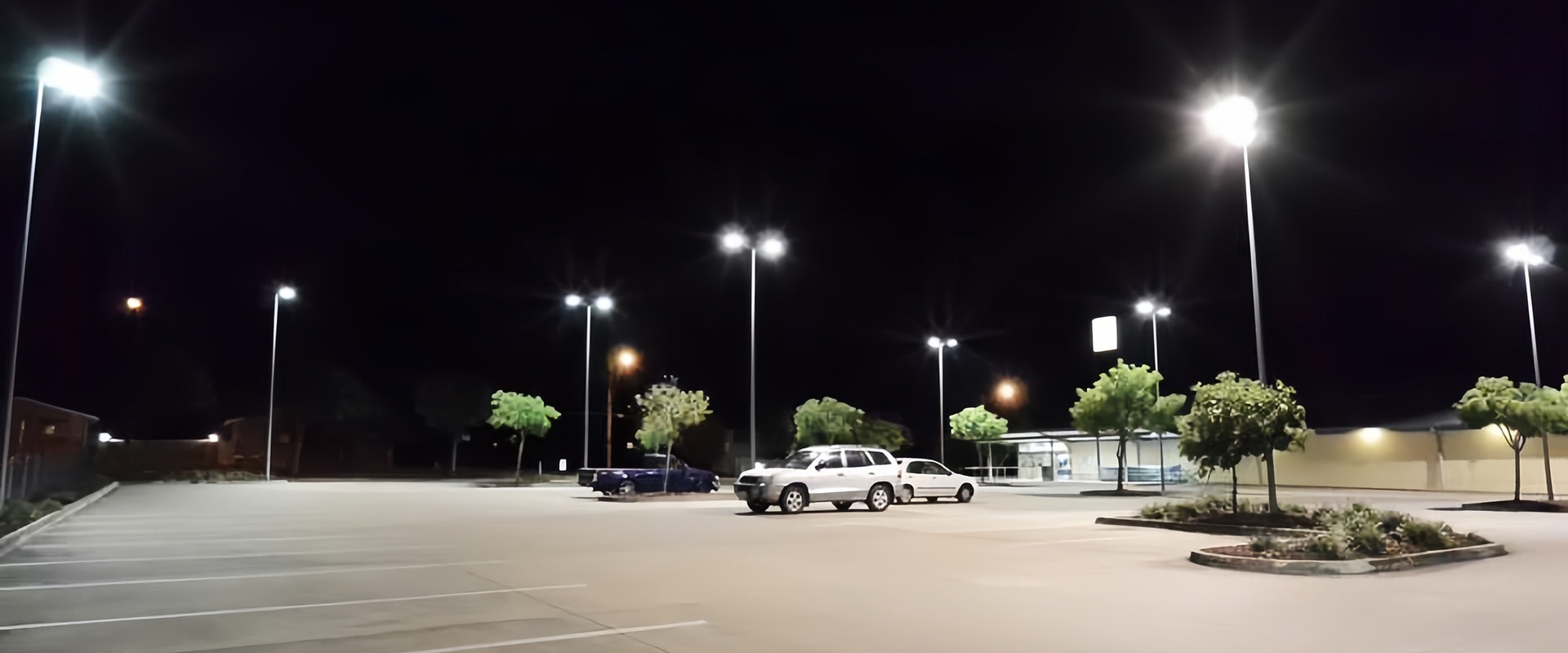
Types of LED Solar Lights
When it comes to solar lighting for parking areas, choosing the right type is key to getting the performance and reliability you need. Each type of solar light has specific features designed to match different lighting conditions and usage patterns. Here’s a breakdown of the most common types:
Integrated All-in-One Solar Lights
These units combine the solar panel, LED light, battery, and controller into a single compact fixture. They are lightweight, easy to install, and have a clean design. Integrated solar lights are ideal for residential areas, small parking lots, and walkways where moderate lighting is sufficient.
Split-Type Solar Lights
In split-type systems, the solar panel is mounted separately from the LED light. This allows the use of larger panels and batteries, which can generate and store more power. These are well-suited for commercial parking lots, industrial areas, or any application requiring higher brightness and longer run time.
Solar Lights with Motion Sensors
These lights operate in low-brightness or standby mode and switch to full brightness only when motion is detected. This setup conserves energy while still providing strong illumination when it’s actually needed. They’re perfect for low-traffic areas, storage yards, and driveways where full-time lighting isn’t necessary.
Dusk to Dawn Solar Lights
Equipped with a built-in photocell sensor, these lights automatically turn on at sunset and off at sunrise. They provide consistent overnight lighting, making them ideal for public parking lots, apartment complexes, or commercial properties that need dependable all-night coverage.
Hybrid Solar Lights
Hybrid systems combine solar power with backup access to the electrical grid. They operate using solar energy when the sun is available but automatically switch to grid power during extended cloudy or rainy days. This ensures that lighting remains stable and uninterrupted, even in unpredictable weather.
Choosing the right type of LED solar light depends on your location, lighting needs, and how much reliability you want in all conditions. Each type brings a unique advantage that helps tailor your lighting system to your specific environment.
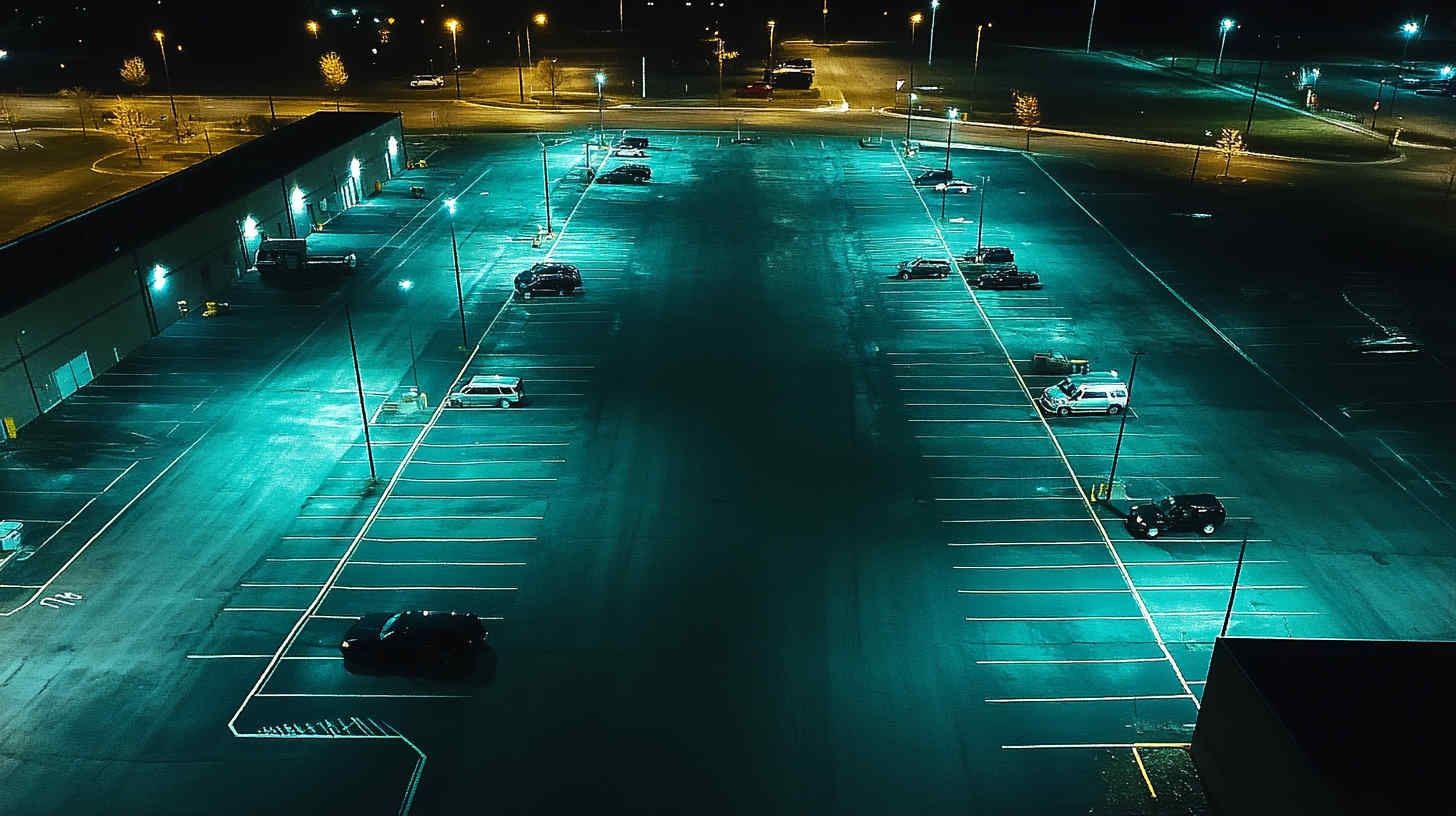
FAQs About Solar Parking Lot Lights
Do solar parking lot lights work?
Yes, when properly installed, solar parking lot lights provide consistent lighting all year round. Even in cloudy or low-sunlight areas, modern systems store enough energy in the battery and use smart controls to maintain reliable nighttime performance.
Which lighting is best for parking lots?
The best choice is commercial-grade LED solar lights with high lumen output, weather-resistant housing, and built-in features like motion sensors and dusk-to-dawn controls. These fixtures combine efficiency, durability, and automatic operation to deliver reliable performance in outdoor environments.
Can parking lights be LED?
Yes, and in fact, LED is now the preferred standard for parking lots. LEDs are more energy-efficient, last longer, and provide better brightness and color clarity compared to older technologies like metal halide or fluorescent lights.
How many lumens do you need for parking lot lights?
For standard commercial lots, a good range is between 20,000 to 30,000 lumens per fixture. The exact amount depends on the size of the lot, pole height, and how much light coverage is required in each area.
How many watts for parking lot lights?
Wattage depends on the lumen output needed. For example, a 150W LED light often matches the brightness of a 400W metal halide fixture. LEDs use less power to produce the same or greater light output, offering significant energy savings.
What is the lux level for parking lot?
Industry recommendations suggest 10 to 30 lux for general parking areas. For high-security sections, pedestrian pathways, or entrances, up to 50 lux may be appropriate to improve visibility and safety.
How do you calculate parking lot lights?
To calculate the number of lights needed, you must consider factors like total area, desired brightness (lux), pole height, and fixture beam angle. Using a lighting layout calculator or consulting a professional can help ensure even coverage and optimal placement.
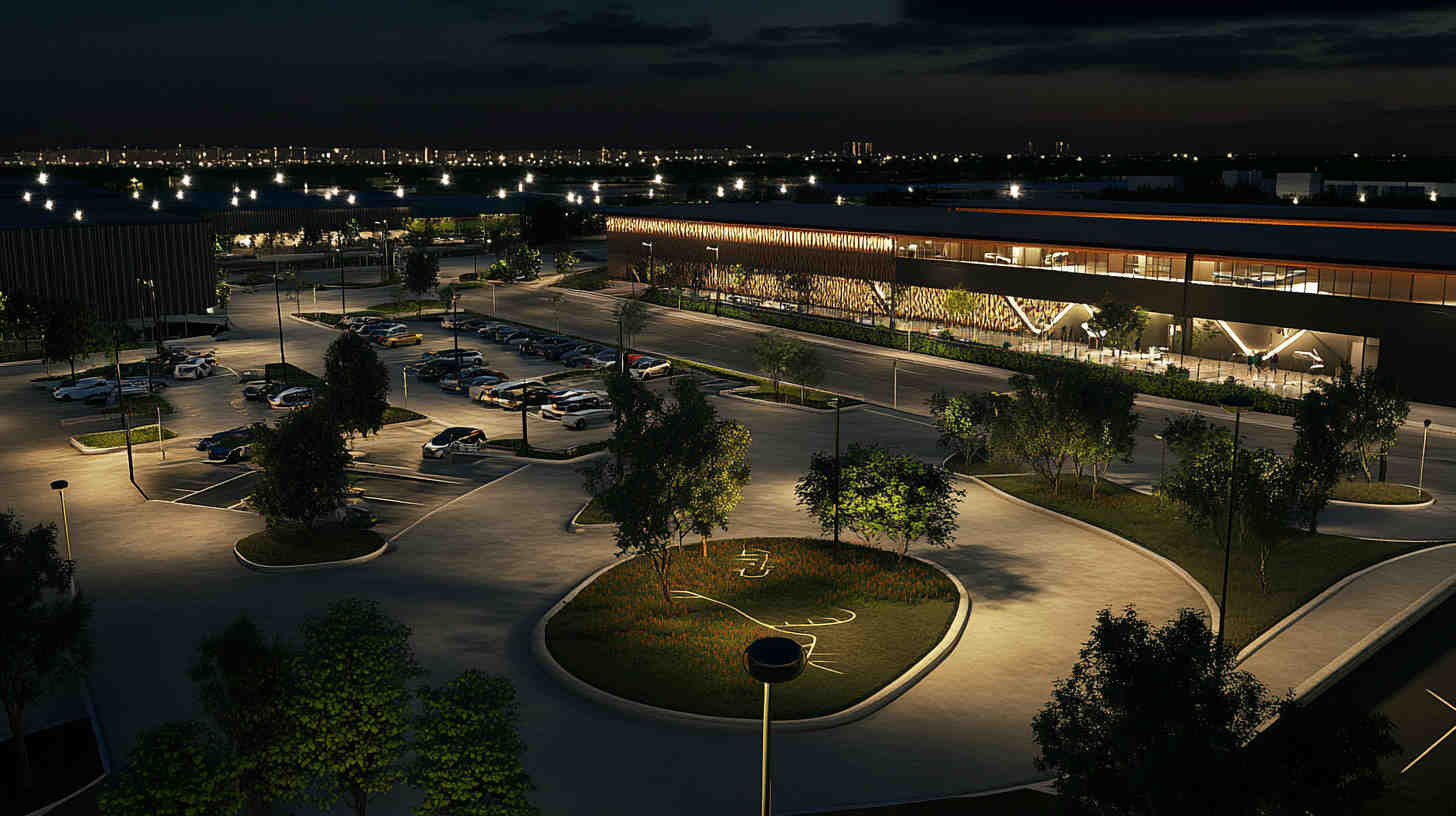
Final Thoughts
Solar parking lot lights offer a smart, sustainable solution for anyone looking to improve outdoor lighting while reducing energy costs and environmental impact. With the right setup, they’re reliable, efficient, and surprisingly simple to install.
Need help choosing the best LED solar parking lot lighting for your project? Reach out to us at Logos Lighting—we’re happy to help.


